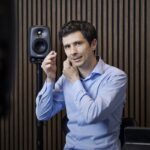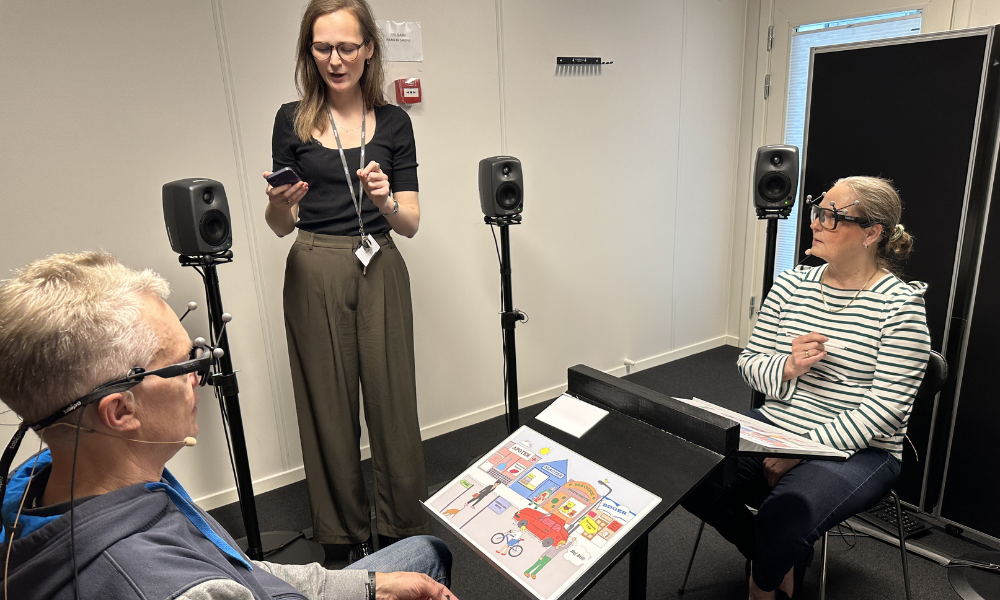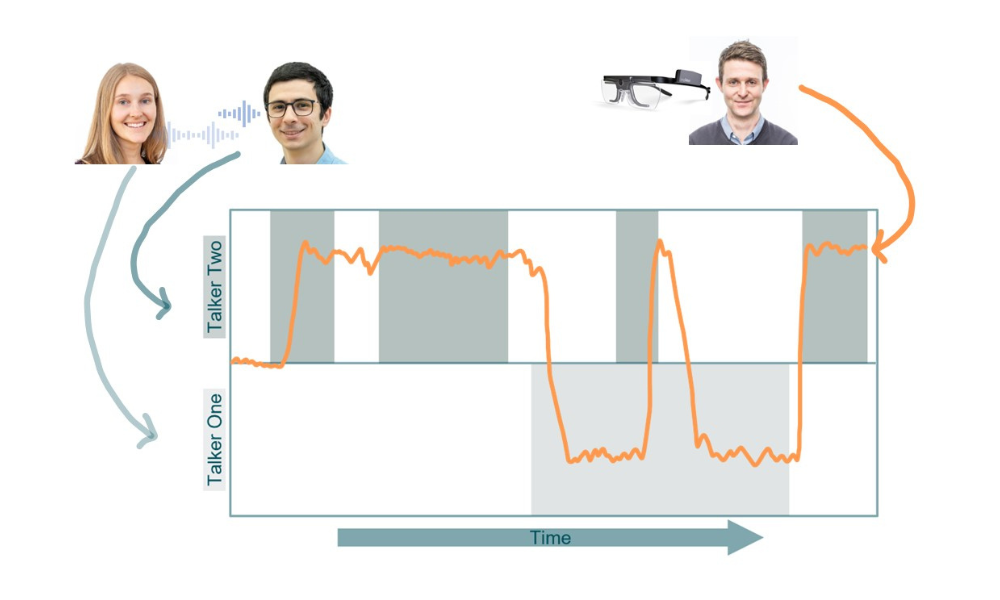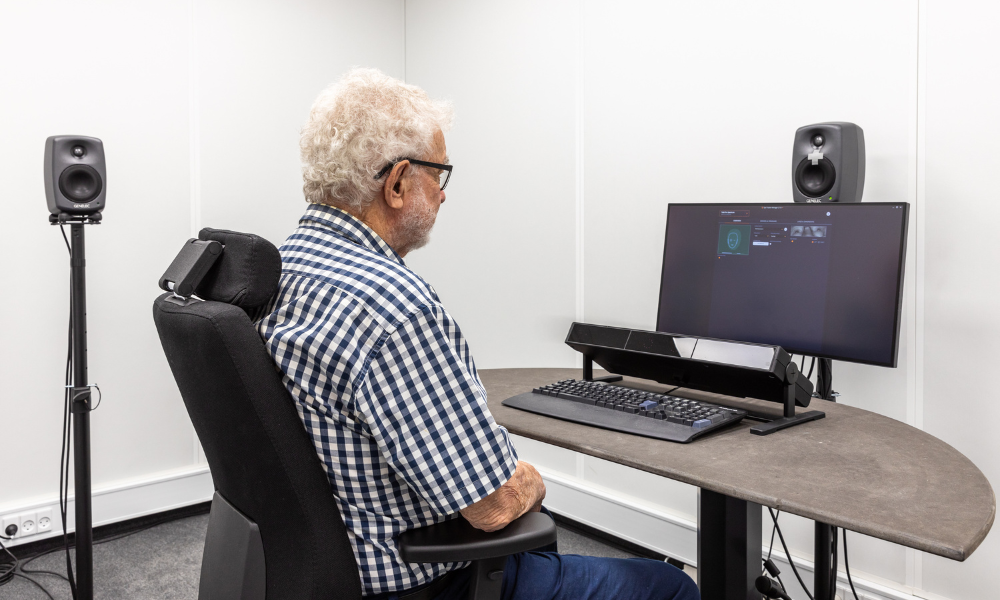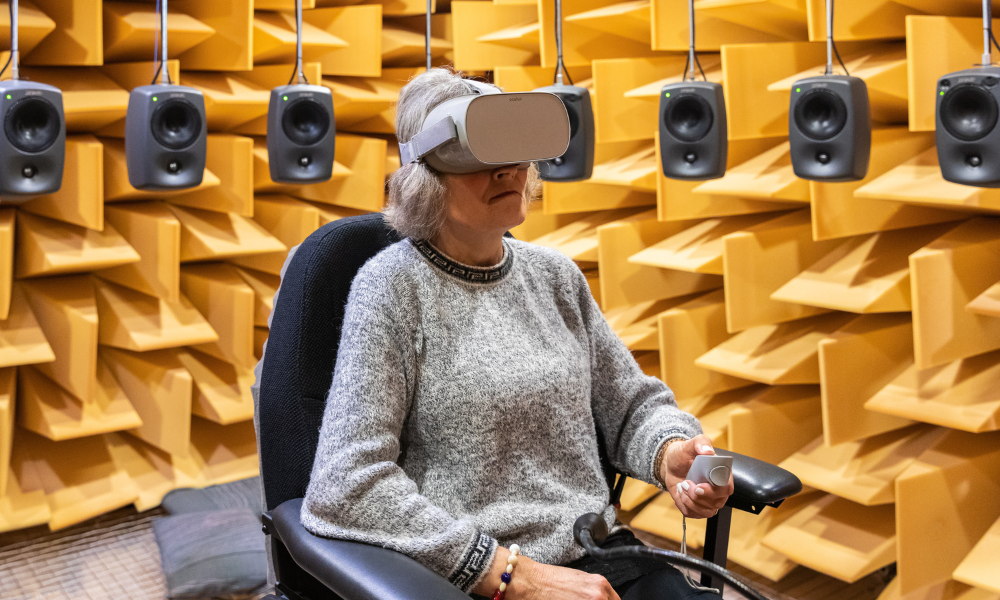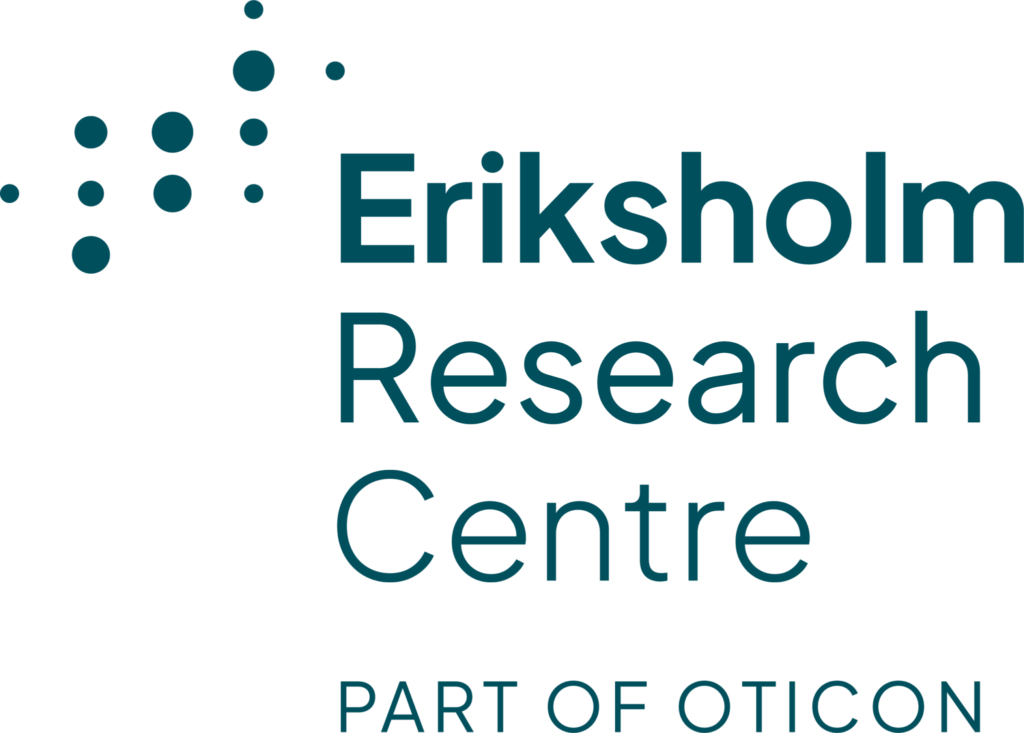Introduction
Difficulty when communicating with others is one of the most disabling consequences of living with hearing loss. Yet, what we know today on the effect of hearing loos in real-life interactive conversations is limited and there is no clinical method to assess it.
This work has been partially financed by Innovation Found Denmark (1045-00007B).
Aims
In this project, we aim at developing an outcome measure than can help us understand if a person with hearing impairment is struggling in interactive conversations. Our outcome measure will be a combination of speech production measures, like speech production level, physiological measures, like heart rate variability and behavioral responses, like eye gaze. We hope for our outcome measure of communication difficulty to be both sensitive to hearing loss but also to hearing aid signal processing.

Methodology
We collected data of test participants having conversations in the Communication Behavioral Lab at Eriksholm. This lab is equipped with a loudspeaker array and a Vicon motion tracking system. Participants are equipped with boom microphones, portable eye trackers and arm bracelets to monitor cardiovascular measures. We have carried out two experiments:
Experiment 1: 12 pairs of normal hearing participants were recruited and held conversation under diverse difficulty conditions.
Experiment 2: 24 normal hearing participants paired with 24 hearing impaired participants were recruited. They held conversation under diverse difficulty conditions.
Results
We demonstrated for the first time that several physiological measures have the potential to become biomarkers of communication difficulty caused by noise or hearing loss. Building on this, we compared various outcome measures sensitive to these changes during conversations, revealing that under different acoustic strains (increased noise vs reduced hearing), different measures feature as the stronger predictors for changes in ease of communication. However, we also found that none of these measures are as sensitive to acoustic changes as clinical speech intelligibility tests, suggesting that such tests may overestimate real-life communication challenges.

